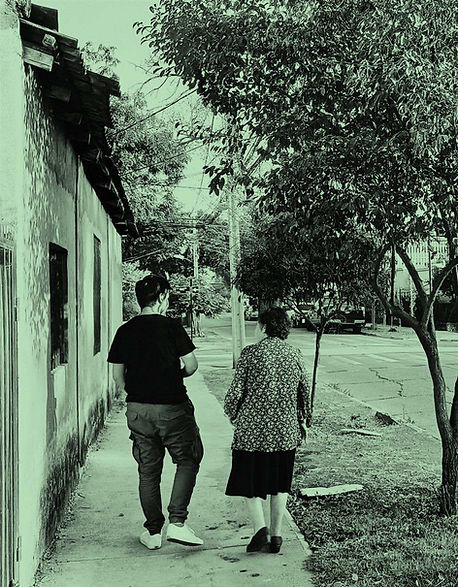Methodology

Methods
1. Quantitative geospatial analysis
To identify neighbourhoods with high concentrations of older people, high walking accessibility to opportunities and different crime incidence.
2. Fieldwork in 4
selected neighbourhoods (n = 40)
1. A survey, asking for self-reported travel patterns, mobility experiences and perceptions associated to security
2. A 7-days follow-up, asking for trips, purposes and modes, and security perception
3. A group walking interview, asking for the elements associated to the walking experience
From Data to Action:
Understanding and Improving Walkability for Older Adults
This project explores how crime and perceived insecurity shape the walking habits of older adults in Santiago de Chile and Guadalajara, using a three-phase, mixed-methods approach.
Phase 1: Mapping Risks and Opportunities
We begin with a geospatial analysis using open data (census, crime statistics, maps) to:
-
Identify neighbourhoods with high concentrations of older adults (ages 65–75 and 75–85).
-
Assess walkable access to key services like shops, healthcare, and public transport.
-
Examine local crime rates.
Two contrasting neighbourhoods are selected in each city—one with high crime and one with low crime—to compare how safety impacts walking, even in areas with similar accessibility.
Phase 2: Listening to Lived Experience
In each selected neighbourhood, we work directly with older adults (five women and five men per area) to:
-
Conduct in-depth interviews and mental mapping exercises.
-
Monitor daily walking behaviours for one week through short phone check-ins.
-
Identify fear zones, safety strategies, and barriers to mobility.
This phase reveals how insecurity—real or perceived—affects their daily lives, autonomy, and health, and highlights differences between cities, genders, and age groups.
Phase 3: Turning Insights into Solutions
Using the data and stories collected, we develop:
-
Policy and design recommendations tailored to each city.
-
A public report and academic article.
-
A mini-website to share key findings.
-
Local events to present actionable ideas to urban planners, policymakers, and community groups.
Deliverables include: interactive maps, behaviour reports, fear-zone analyses, and locally relevant guidelines to improve safe, accessible walking for older adults in Latin America.